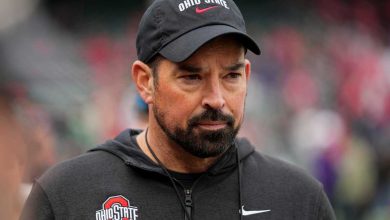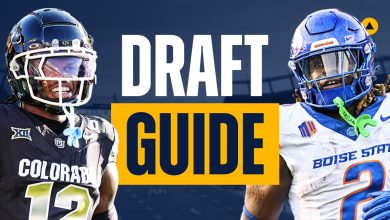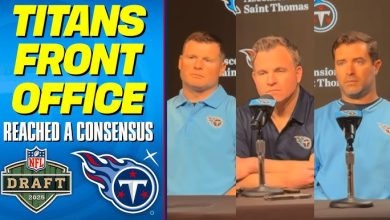According to an ESPN report, Pete Maravich, the legendary LSU basketball player whose college career took place between 1968 and 1970, has been recognized as the greatest player of all time in men’s college basketball. He narrowly edged out notable contenders such as Austin Carr of Notre Dame, Christian Laettner of Duke, Dan Issel of Kentucky, and Jerry Lucas of Ohio State to earn this distinction.
Pete Maravich, often called “Pistol Pete,” stands as one of the most iconic figures in college basketball history. His revolutionary style of play, prolific scoring, and charismatic personality left an indelible mark on the sport. Recognized by ESPN as the greatest men’s college basketball player of all time, Maravich’s legacy surpasses mere statistics, embodying innovation, entertainment, and influence that transformed the game. This extensive examination delves into his life, career, legacy, and the context in which he earned this prestigious title, comparing him with other basketball legends like Austin Carr, Christian Laettner, Dan Issel, and Jerry Lucas.
—
Born on June 22, 1947, in Aliquippa, Pennsylvania, Pete Maravich demonstrated exceptional basketball talent from a young age. Growing up in a basketball family—his father, Press Maravich, was a coach—Pete was immersed in the sport, developing advanced skills early on. His upbringing in a basketball-rich environment fostered a unique skill set, creativity, and a deep understanding of the game.
By his teenage years, Maravich was already making waves in high school basketball, setting records and earning recognition for his scoring ability and ball-handling. His early exposure to intense coaching and competition laid the groundwork for his revolutionary college career.
—
**College Career at LSU (1968-1970)**
Pete Maravich played for Louisiana State University (LSU) from 1968 to 1970, a period during which he redefined offensive play in college basketball. His playing style was characterized by unparalleled ball-handling, creativity, and scoring ability, often performing feats that seemed ahead of his era. His college career was marked by:
– **Scoring Prowess:** Maravich amassed a total of 3,667 points over his three seasons, an NCAA record that stood for decades. His scoring average of 44.2 points per game remains one of the highest in NCAA history.
– **Innovative Play:** He popularized behind-the-back passes, no-look shots, and dribbling moves that dazzled audiences and challenged traditional playing styles.
– **Statistics and Records:** His ability to score from anywhere on the court made him virtually unstoppable. He led the nation in scoring all three seasons he played, showcasing dominance that was unprecedented at the time.
– **Impact on the Game:** Maravich’s style influenced future generations of players, emphasizing flair, improvisation, and offensive creativity that became integral to modern basketball.
—
**Playing Style and Skills**
Maravich’s game was characterized by:
– **Exceptional Ball-Handling:** His dribbling was mesmerizing, often confusing defenders with quick moves, crossovers, and spins.
– **Scoring Ability:** He possessed a deadly shooting touch, ranging from long-range jump shots to acrobatic layups.
– **Creativity and Flair:** Maravich’s style was theatrical, making basketball an entertaining spectacle, which helped elevate the sport’s popularity.
– **Basketball IQ:** His understanding of angles, timing, and spacing allowed him to anticipate plays and create scoring opportunities for himself and teammates.
His playing style broke conventional norms and inspired a generation of players to adopt a more expressive approach to the game.
—
**Historical Context and Significance**
During the late 1960s and early 1970s, college basketball was evolving, but Maravich’s influence was revolutionary. His emphasis on individual skill and entertainment value contributed to the sport’s growth nationally. His performances drew record crowds, and his style was a precursor to the flashy, high-scoring guards that would dominate later eras.
Despite playing before the implementation of the three-point line, Maravich’s scoring feats were even more remarkable, considering he achieved them without the modern spacing and shooting rules. His style inspired future rule changes and approaches to offensive basketball.
—
**Comparison with Contemporaries and Legends**
Maravich’s greatness is often compared with other legendary players, including:
– **Austin Carr (Notre Dame):** Known as “Mr. Comeback,” Carr was a prolific scorer in the early 1970s, with a smooth shooting touch and leadership qualities. His career was marked by clutch performances and high scoring averages.
– **Christian Laettner (Duke):** Laettner was renowned for his clutch performances, especially in NCAA tournaments, and his versatile offensive game. His leadership and winning mentality made him a staple of Duke’s success.
– **Dan Issel (Kentucky):** A dominant center and scorer, Issel’s physical presence and scoring ability helped Kentucky achieve multiple NCAA Tournament successes.
– **Jerry Lucas (Ohio State):** A versatile big man, Lucas was known for his rebounding, scoring, and basketball IQ, leading Ohio State to a national championship.
While all these players achieved remarkable success, Maravich’s innovative style, scoring records, and cultural impact set him apart as the ultimate icon in college basketball history.
—
**Achievements and Honors**
– **All-American Selections:** Three-time consensus All-American (1969-1971).
– **Scoring Titles:** Led NCAA in scoring all three seasons.
– **Records:** NCAA record for career points (3,667) until surpassed many years later.
– **Awards:** Various player of the year awards, recognition for his offensive prowess.
– **Legacy:** Induction into the Naismith Memorial Basketball Hall of Fame in 1987.
—
**Off-Court Influence and Cultural Impact**
Maravich’s influence extended beyond the court:
– **Entertainment:** His style made basketball more exciting, inspiring players and fans alike.
– **Innovator:** He popularized moves and techniques that are now standard parts of basketball training.
– **Global Reach:** His charisma and unique style helped elevate the sport’s popularity worldwide.
– **Legacy in Popular Culture:** Maravich appeared in films, commercials, and was a household name, transcending the sport.
—
**Post-College Career and Beyond**
Although Maravich never played in the NBA during his college years, his professional career was marked by:
– **NBA Success:** Playing for teams like the Atlanta Hawks, New Orleans Jazz, and others, he continued to showcase his scoring ability.
– **Injury and Challenges:** His career was hampered by injuries and personal struggles.
– **Coaching and Mentoring:** Later in life, he contributed as a coach and mentor, inspiring countless players.
His death in 1988 at age 40 was a significant loss for the basketball community, but his legacy endures.
—
**Legacy and Recognition as the GOAT**
ESPN’s designation of Maravich as the greatest college basketball player of all time is rooted in:
– **Statistical Dominance:** Unmatched scoring records and influence on the game.
– **Innovative Style:** Pioneering a style that changed perceptions of offensive basketball.
– **Cultural Impact:** Elevating college basketball into a more entertaining and popular sport.
– **Enduring Influence:** Inspiring countless players and shaping modern basketball.
His comparison with legends like Austin Carr, Christian Laettner, Dan Issel, and Jerry Lucas highlights the different facets of greatness—scoring, leadership, versatility, and cultural impact—all embodied by Maravich.
Pete Maravich’s career and influence epitomize the essence of greatness in college basketball. His revolutionary style, incredible achievements, and lasting impact on the game justify ESPN’s recognition of him as the GOAT. His story is one of innovation, entertainment, and excellence, inspiring generations and forever cementing his status as an immortal icon in the sport’s history.
—
**References**
– ESPN Reports and Archives
– NCAA Records and Historical Data
– Basketball Hall of Fame Documentation
– Biographies and Documentaries on Pete Maravich
– Interviews with Players and Coaches Influenced by Maravich
– Historical Footage and Game Analysis









